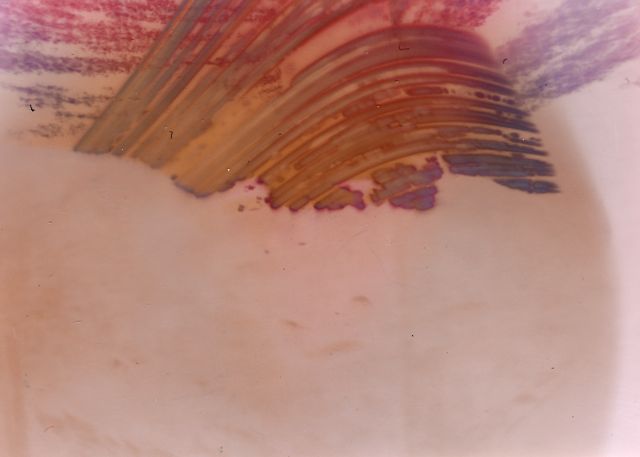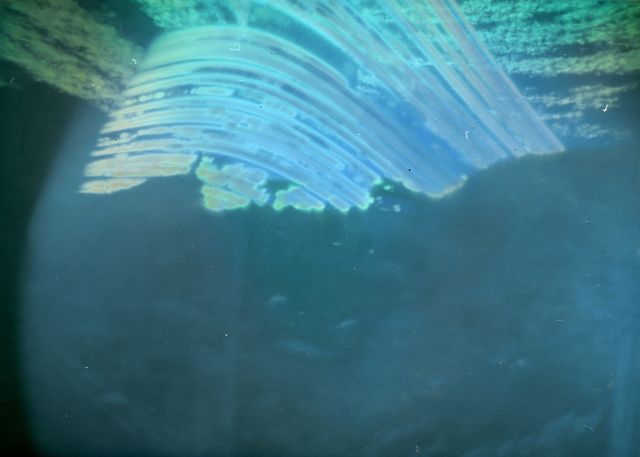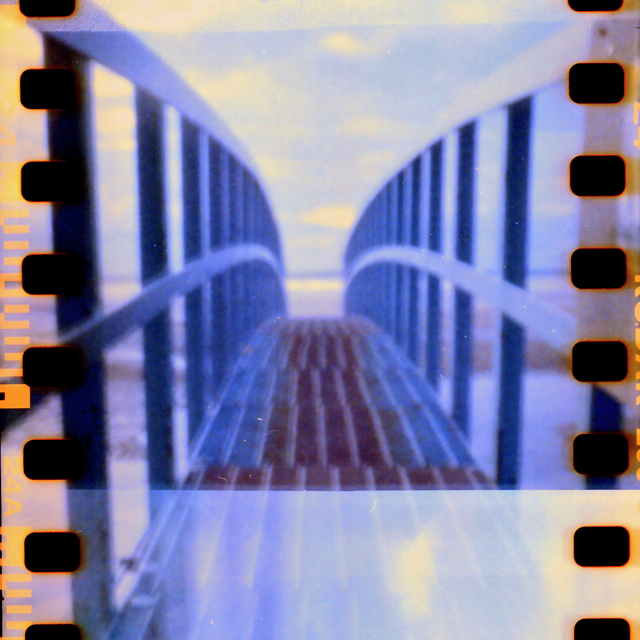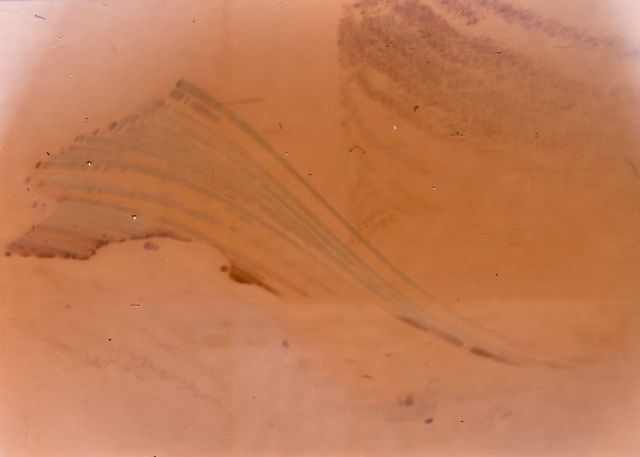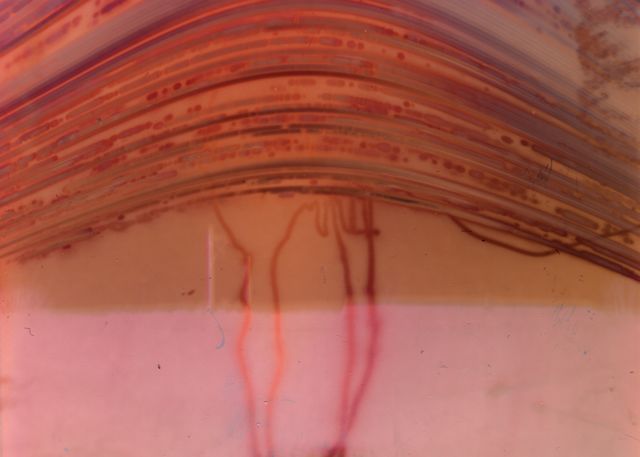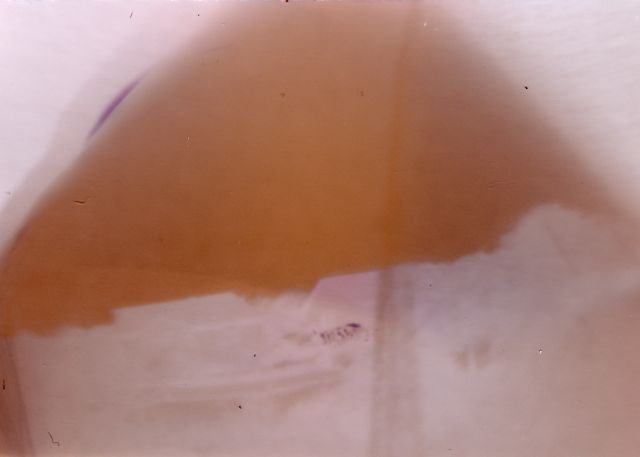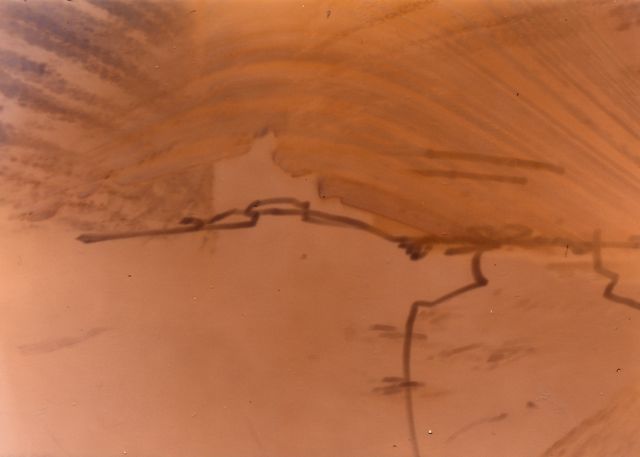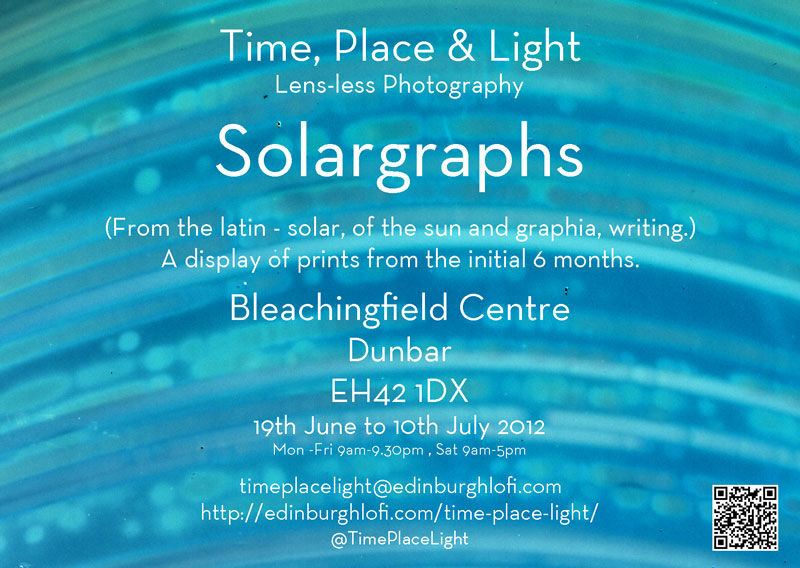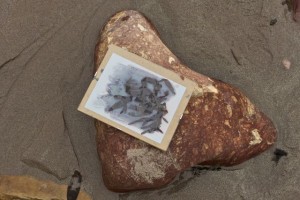The blue print, also known as the cyanotype was invented by Sir John Herschel in 1842, as a means of copying notes and diagrams. Anna Atkins used this photogram process in 1842-43 to document a selection of plants and seaweeds by placing the specimens directly onto the sensitised paper to allow daylight to activate the chemical coating creating a sillhouette effect. Anna Atkins is widely regarded as the first female photographer.
We followed in her footsteps.
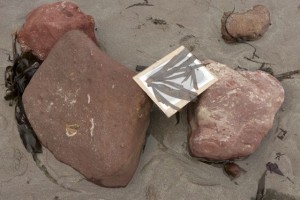
Cyanotype 2 UV exposure in clip frame.
A clip frame is used to hold watercolour paper which has had a solution of potassium ferricyanide / ferric ammonium citrate brushed on. Seaweed is arranged across the surface and the glass clipped down to keep everything steady. The sun now gets to work, the UV rays providing the power to the chemical reaction.
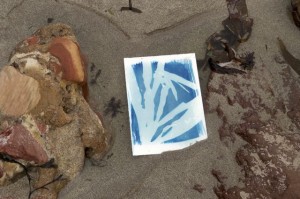
Cyanotype 2 in pool
After several minutes the exposed areas of the coated paper can be seen to change to a dull grey colour and the print is ready for rinsing. An initial rinse can be made in the rock pool with a fresh water rinse required later to remove the salt.

